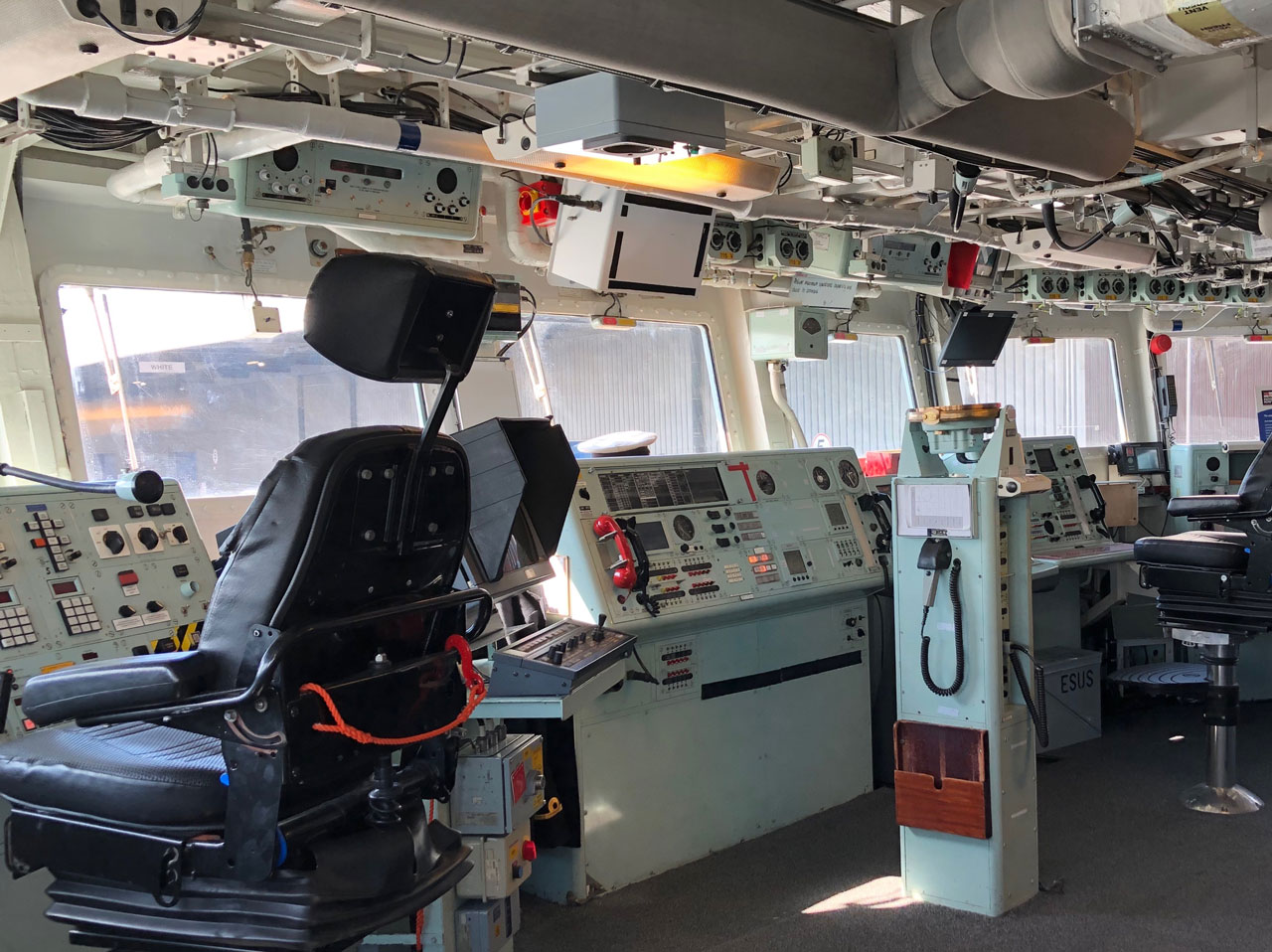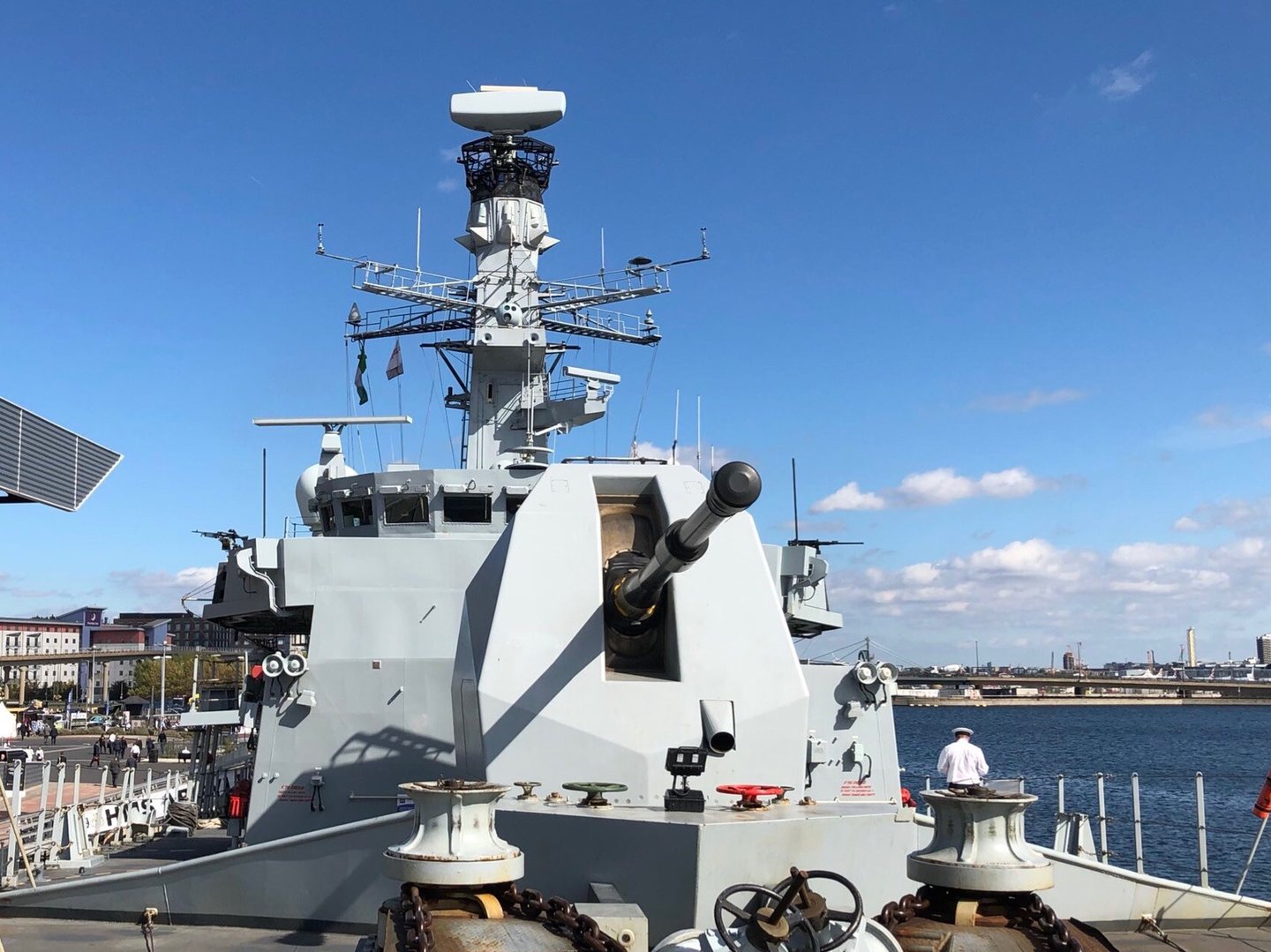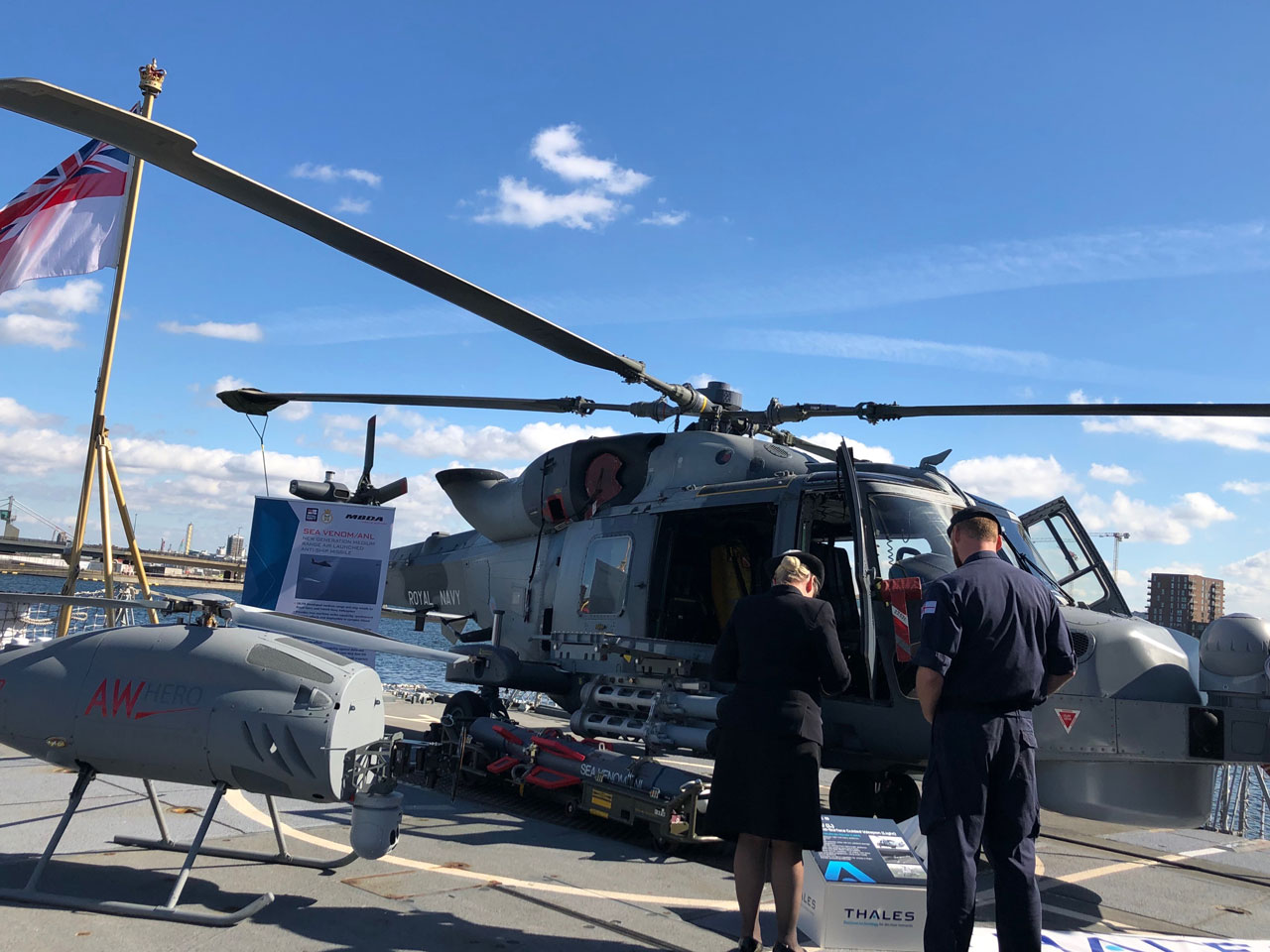SEA
Teaching an old ship new tricks: we visit HMS Argyll
The Type 23 may not be the most modern class in the UK Royal Navy’s arsenal, but it is a central pillar of the fleet. Harry Lye went onboard the ship at DSEI to learn more about its operations and the importance of the Type 23 to British security both at home and abroad.

// Image courtesy of
With the Type 23 facing imminent decommissioning it is easy to imagine these vessels, which first saw use in 1990, as out of touch with the requirements, but HMS Argyll proves that could not be further from the truth. Entering the old school bridge, the appeal of its analogue technology becomes abundantly clear.
Compared to modern warships with their advanced integrated navigation and bridge systems featuring a myriad of touch screens, displays and consoles, the Argyll looks as if it has been plucked from WWII. Despite this, the simplicity of physical controls is a favourite of the sailors, who told us “it all works, it all works really well”.
Analogue but not outdated
The pull of modernisation has led the builders of warships down the path of digitised bridges, but in some areas this is redundant. The introduction of digital controls has led to accidents recently, with the US Navy, for instance, reverting its Ashleigh-Burke-class destroyers to analogue systems.
As we visit the Argyll’s bridge the verdict here is clear: the tactile feedback of the consoles and systems means that the ship is never acting unexpectedly; this control is vital when navigating busy shipping lanes and hostile environments.
The radar on the Argyll is also a world apart from modern systems as installed on newer ships such as the Type 45 Destroyer, but again that does not make it redundant. The Argyll employs two systems, a Type 1007 and Type 1008. Both are digital but slightly different, factoring in different needs and giving the ship a constant image of its surroundings.

The Argyll’s bridge, with its analogue systems, looks like it has been plucked from the Cold War era.
This analogue approach also has the advantage of versatility, with no ambiguity in who is controlling what and when. A skeleton crew of four or a full crew of 14 can operate the ship, meaning in a high-intensity environment, the crew can focus on other areas of the ship as needed.
The ability of the Argyll to stay afloat in the information age was highlighted at DSEI when the ship took part in operations with BAE Systems’ autonomous Pacific 24 sea boat. The Argyll used its combat systems to interface with the boat, opening the door for future anti-piracy and other operations.
Mission to mission versatility
The Type 23s were originally designed for anti-submarine warfare, sweeping the seas for subsurface vessels, however, over the years they have become so much more. The vessels have served monitoring Russian task groups, carrying out ad-hoc rescue missions and deployment to every corner of the globe.
Part of the ship’s unique ability is that it can operate in any environment; be it in the blazing sun and the seas of the Middle East, or the freezing extremes of the Arctic, the HMS Argyll can go and has gone there.

The Argyll uses a combination of older and modern weapons.
Described by the crew as a floating village, the Argyll continues to mark its presence almost 30 years from its first launch. Refits over the years have served to upgrade its capabilities. In 2010 the Argyll received improved weapons and sensor systems, and later became the first ship to be armed with the Sea Ceptor missile which allowed it to engage an even wider set of targets.
The Sea Ceptor is augmented by the Argyll’s main gun, which is again a WW2 technology – but, as the sailors say: if it can hit a pizza box at 20km distance, why change it? The bow of the ship is fitted with a 4.5in BAE Systems Mark 8 naval gun which can fire 25 rounds per minute.
Where your eyes don’t go
On the stern of the ship sits another of its assets, a Wildcat marine attack helicopter, which the operator describes as the ‘eyes and ears’ of the ship. Fitted with a 360-degree radar that dramatically increases the ship’s line of sight, Sting Ray torpedoes and a mounted machine gun, the Wildcat is as fierce as it looks.
The Type 23 frigates are supported by a helicopter which, as a sailor describes it, is key to the operation of the ship, constantly flying ahead where the ship can’t see.

The Argyll’s Wildcat marine attack helicopter.
The Royal Navy has in the past tried to squeeze two helicopters on-board the Type 23, but there just isn’t enough space. The hangar on the Type 23 only has enough space for one Wildcat, the crew explained, which means a second helicopter would have to be kept outside and if that breaks down the only way to launch the other is tip one overboard.
For the ship the Wildcat adds vital range, allowing the ship’s crew to see over 400 miles ahead of its position.
End of an era
The Royal Navy is soon set to say goodbye to the Argyll and the other Type 23s as the force modernises and brings new vessels into service, but as we stand on-board the ship there is a sense of the frigate’s importance to the navy. When a ship is so integral to operations for such a long time, it is hard to understate how much the vessels will be missed.
As the Royal Navy prepares to enter the Type 26 into service, the importance of its predecessor should not be forgotten. The Argyll is one of the oldest Type 23s still in operation with the Royal Navy, due to leave service in 2023. The fact that numerous countries interested in taking over the ship when is eventually retired certainly pays testament to its capabilities.

GDT reporter Harry Lye tests the captain’s seat onboard HMS Argyll.